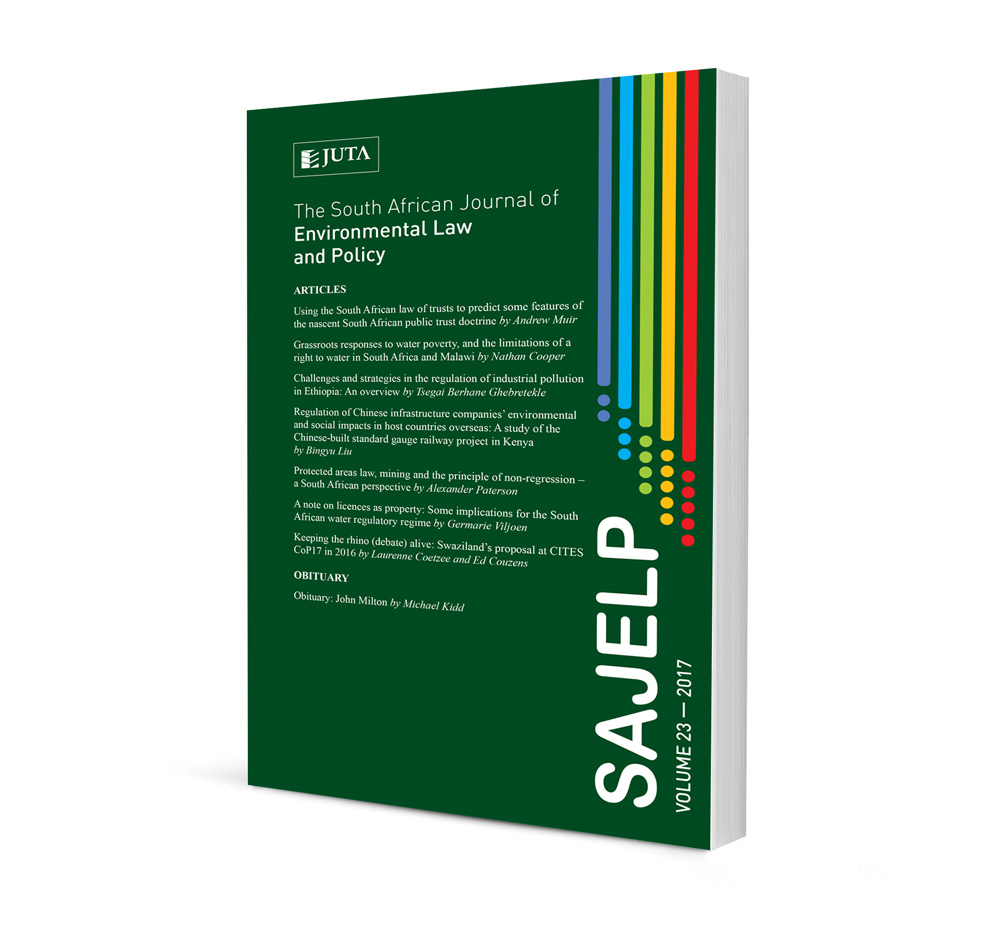
Regulation of Chinese infrastructure companies’ environmental and social impacts in host countries overseas: A study of the Chinese-built standard gauge railway project in Kenya
Authors Bingyu Liu
ISSN: 2616-8499
Affiliations: None
Source: South African Journal of Environmental Law and Policy 2017, p. 101 – 141
Abstract
China has rapidly become one of the world’s biggest overseas investors, and has increasingly encouraged more companies to go abroad. As part of China’s ‘One Belt One Road’ Initiative, Kenya’s Standard Gauge Railway (SGR) aims to promote trade and investment for Kenya and other countries in Eastern Africa. The railway construction is done by the China Road and Bridge Corporation (CRBC). Since the construction of the project, the SGR has sparked controversy on its community and environment impact, contracting practices, and financing arrangements. This article will analyze the environmental and social impact of the second phase of SGR’s construction (Mombasa-Nairobi)on the local communities and people. Specifically, the article addresses three questions: What is the CRBC’s environmental and social performance in the Mombasa-Nairobi SGR project in practice? What are the most important factors that influence the CRBC’s environmental and social behavior? What are the legal implications of the SGR project on other Chinese infrastructure building investments overseas in the future? This research was conducted through in-depth interviews with over 30 stakeholders, extensive review of publicly available documents, and two field visits to project sites between September and December 2016. The article uses the Mombasa-Nairobi SGR project as a case study to show how this Chinese state-owned company has tried to tackle environmental and social pressures, comply with Kenyan domestic and international environmental standards, and fulfill its corporate social responsibilities during construction. It examines the role of different stakeholders, including the Kenya government, the Chinese government, the China Export-Import Bank, the CRBC and third-party monitoring parties during the environmental and social impact assessment (ESIA) stage of the project. The article then examines the regulatory factors that have asserted the greatest impact on the CRBC’s environmental behaviors, and hence, the implication of this project for Chinese infrastructure construction companies in the future. The article will show that the SGR case, in demonstrating good cooperation between the home country government, host country government, financial institution, overseas infrastructure company and third-party monitoring parties involved in the project, can serve as a model for future Chinese infrastructure investment in African countries.